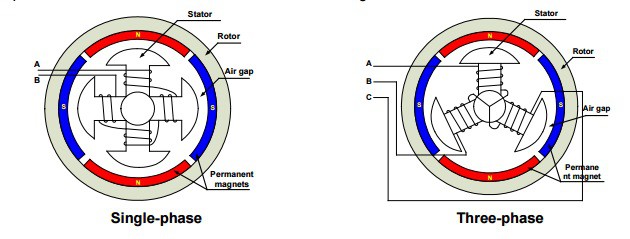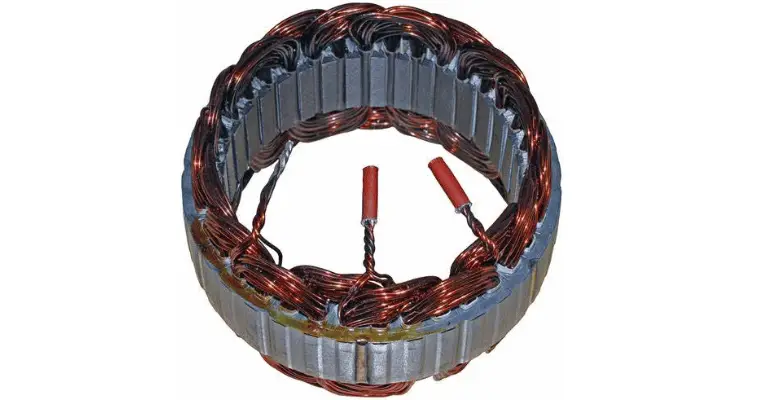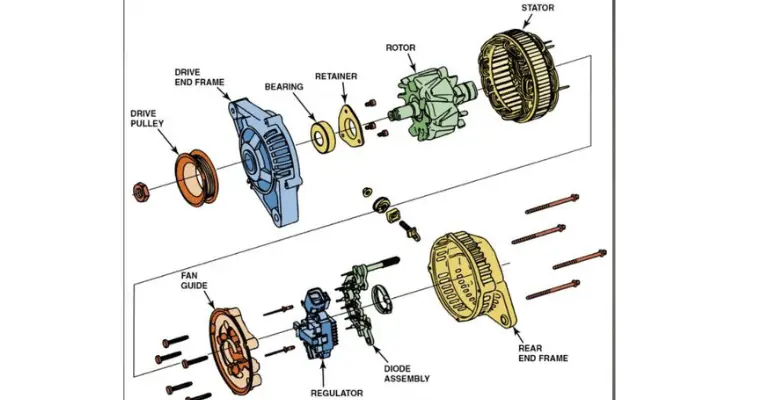Every motorcycle rider has probably asked this question at some point, especially Harley riders – do Harleys have alternators? The answer is a somewhat complex ‘yes’ and ‘no.’ While it’s true that Harley-Davidson motorcycles do use an alternator to generate electrical power, it’s not the same as the alternators found in cars or trucks. Instead, they use a distinct type of alternator known as a stator.
Understanding the difference between these two key components and why they are used can help you better appreciate your Harley’s engineering and maintain its electrical system. Let’s take a closer look.
So, Do Harley Davidsons Use an Alternator? (No)
When we refer to alternators, we often think of the car-style alternators – a distinct, separate component that is driven by a belt connected to the engine. These are common in vehicles like cars and trucks, where they charge the battery and power electrical loads. However, when it comes to motorcycles, especially Harley Davidsons, the situation is a bit different.
Motorcycles, due to their compact design, do not have the extra space to accommodate a full-sized car-style alternator. Therefore, instead of an alternator, they have a built-in component within the engine itself known as a stator.
Brief Overview of A Harley Davidson’s Charging System
The charging system in Harley-Davidson motorcycles is designed to power the electrical components and recharge the battery while the engine is running. This system incorporates a stator, which acts as the alternator, and a voltage regulator, which ensures consistent voltage levels to prevent damage to the electrical system.
The stator is the stationary part of an electric motor, containing windings that create a magnetic field. As the motorcycle engine spins, the magnets on the rotor generate electricity in the coils of the stator. This electricity is then transferred outside the engine via wires, powering the bike’s electrical components and charging the battery.
What Is A Stator?
A stator, in the simplest terms, is a type of alternator specially designed for motorcycles. It is a stationary component of the engine with copper windings around its spokes. As the engine’s rotor (the moving part) rotates around the stator, the interaction between the magnets in both parts induces a flow of alternating current (AC). This AC current is then converted into direct current (DC) by a rectifier before it’s used to charge the battery and power the other electrical components of the motorcycle.
Related article: Bad Harley Stator Symptoms
What Does 2-Phase and 3-Phase Mean?
Harley-Davidson motorcycles use a three-phase system to generate power for the bike’s electrical components. In a three-phase system, three separate alternating currents are produced, each offset by a third of the cycle.

This system delivers a smoother and more constant power output compared to a two-phase system, which only produces two alternating currents offset by half a cycle.
How Is A Stator Different From An Alternator?
While both alternators and stators function as electrical generators in vehicles, they differ in their structure, location, and complexity. An alternator is a separate device connected to the engine via a drive belt, and it’s usually found in larger vehicles like cars and trucks. On the other hand, a stator is built into the engine of a motorcycle due to space constraints.

Another key difference lies in how the devices generate power. In an alternator, the magnetic field is created by the rotor (the moving part), while the stator (the stationary part) contains the coils where electricity is generated. Conversely, in a motorcycle stator, the magnets are mounted on the rotor, and the stator generates electricity as the rotor spins around it.
Why Do Motorcycles Use Stators Instead of Alternators?
The main reason for using a stator instead of a traditional alternator in motorcycles is the lack of space. Motorcycles are smaller and less complex than cars, and they simply do not have enough room to accommodate a full-sized alternator. Furthermore, the stator’s design allows it to be built into the engine, utilizing the engine’s movement to generate electricity, which makes it an efficient solution for motorcycles.
[su_youtube_advanced url=”https://www.youtube.com/watch?v=DarSg7U2HzM” title=”This is a video titled ‘How Motorcycle Alternators Work | Allstate’”]
Pros and Cons of An Alternator vs A Stator
The choice between an alternator and a stator largely depends on the vehicle’s size, design, and power requirements. Alternators, with their larger size and independent structure, are better suited for cars and trucks that have more space and larger electrical loads. They also offer better cooling due to their placement outside the engine.
One point to mention: Harley Davidson Stator Replacement Cost
On the other hand, stators, with their compact design and integration into the engine, are ideal for motorcycles. They take up less space and use the engine’s movement directly to generate power, making them more efficient. However, stators can run hotter due to their location inside the engine and may have a shorter lifespan than alternators.
How Does Harley’s Charging System Compare to Other Brands?
Harley-Davidson’s charging system is pretty similar to those used in other motorcycles. Most bike manufacturers use a stator or an equivalent system to generate electricity.

However, the exact specifications, such as the number of phases, the output voltage, and the design of the voltage regulator, may vary from one brand to another.
Recap of Main Points
To summarize, while Harley-Davidson motorcycles do have a component that serves the same function as an alternator, it is not the traditional car-style alternator. Instead, they use a stator, a compact and efficient device that is built into the engine. This stator, in combination with a voltage regulator, forms the charging system that powers the bike’s electrical components and keeps the battery charged.
FAQs
Here are some frequently asked questions about the charging systems in Harley-Davidson motorcycles:
Does a Harley charge while idling?
Yes, a Harley will charge at idle. However, it’s important to know that the charging system only works when the engine is running and generating enough movement to spin the rotor in the stator.
How is the battery charged on a Harley?
The battery on a Harley is charged by the stator. As the engine runs, the stator generates electricity, which is then converted to DC by the rectifier and used to recharge the battery.
Is there a difference between a stator and an alternator?
Yes, while both serve the same purpose of generating electricity, a stator is a compact device built into the engine of a motorcycle, while an alternator is a larger, separate device found in cars and trucks.
All in all, understanding the charging system of your Harley-Davidson motorcycle, including its stator and voltage regulator, can help you maintain its electrical system and ensure a smooth and enjoyable ride.